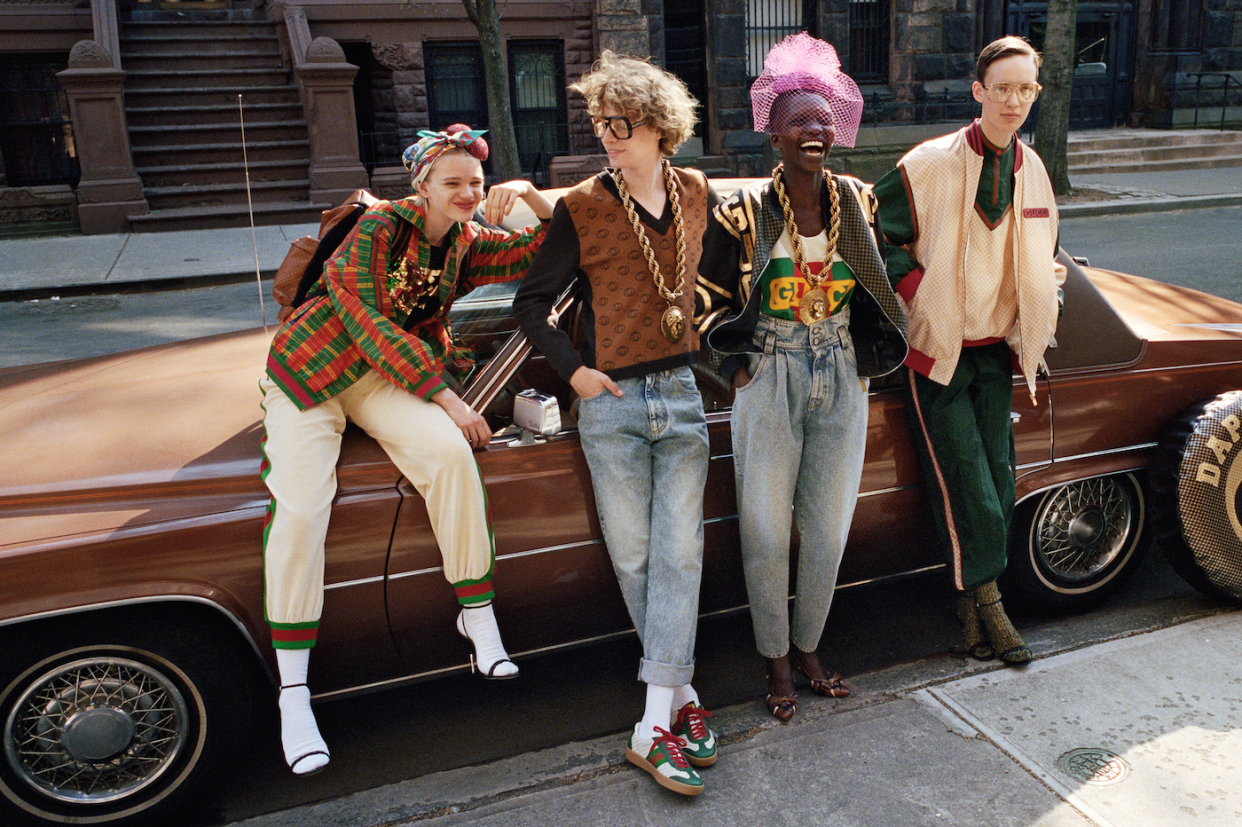Think Tank: As Men’s Wear Skyrockets, Retailers Need to Reconsider Strategy

Retail is constantly evolving, meaning retailers and brands alike are finding themselves re-strategizing and adjusting their priorities. With increased technology innovations and new demographics taking interest in fashion, we’ve witnessed the major rise and influence of men’s wear across retail.
The entire men’s wear market is expected to surpass women’s wear by 2021, and everyone from mainstream retailers like Nike to luxury fashion brands such as Louis Vuitton to celeb clothing lines like Yeezy are looking to capitalize on the trend. But this new demographic of shoppers and their corresponding influence across the industry presents a unique hurdle for retailers. Now they must figure out how to adjust their product offerings while also meaningfully engaging with male shoppers to garner the same success they’ve already achieved with women.
Related stories
Giada Makes Foray in the U.S. Retail Market
Kate Hudson Launches New Ready-to-Wear Apparel Line
True Fit Dives Into Bra Fitting
The rise of men’s wear — an era of male fashion empowerment
Up until the early Aughts, men’s wear was centered around pricey suits and inexpensive leisurewear — the work uniform was your best suit and weekend wear was your favorite graphic or collared T-shirt. Ten years ago, the average man would spend anywhere between $200 to $1,000-plus on a suit and hundreds of dollars on ties to demonstrate their social prowess and career ambitions. Where business casual used to mean khakis and a button-down, today has evolved into a whole new look.
Brands like Dapper Dan, Billionaire Boys Club and Off-White nurtured a shift to elevated casual wear through creating a high-end feeling and atmosphere of exclusivity surrounding their products. These brands brought more than their products to the market, they brought an image. They bolstered the message that with elevated streetwear, men can project a more unique sense of wealth and clout. Streetwear as daily wear may have started with creative agencies but quickly spread into the technology sector and beyond. The “power tie” is no longer a tie, and can be anything from a Stance sock to the right Jordan sneaker. The concept of being a “well-dressed man” has changed.
Setting the stage — how do men and women differ while shopping
As men continue to grow as a target demographic for retailers, the savviest brands will find themselves needing to reassess their brand strategy. When targeting men, different factors need to be considered in order to be successful. For example, recent studies have shown that men are shopping in-store at traditional retailers more than women. According to a recent survey by First Insight, 25 percent of men report shopping six or more times per month compared to only 15 percent of women. This means that men are more open to physically entering and engaging with brand retailers as they shop.
Additionally, men are increasingly becoming more diligent in their shopping habits. Seventy percent of men use smart speakers to research purchase prices before making a purchase (compared to just 46 percent of women), illustrating that men are invested in the purchases they make and aren’t buying the first relevant product that comes across their screen.
While men are more likely to do their research and head to a physical store to do their shopping, studies have also shown that traditionally men prefer a straightforward shopping experience. This is perhaps one of the most important factors for retailers to take into consideration when looking to target to male shoppers.
Men’s wear blurring the line between category and fashion trend
Alongside growing into a demographic, the rise in men’s wear has also permeated into fashion trends for both men and women. The rise of streetwear specifically has impacted fashion lines across the spectrum through a new air of gender-neutrality. Brands like TillyandWilliam and OneDNA are leading this unisex trend and we’re even seeing the style explode with celebrity lines. From Kanye’s Yeezy line to Justin Bieber’s Smiley-Faced Clothing, a gender-neutral air is evident through the “all people streetwear” inspiration, which found its roots in the influx of male interest in fashion.
The way these brands are thinking about clothing has completely evolved. Now, in some of the industry’s most popular brands there’s a blurred line between what clothes are meant for men and women — but, the savviest retailers will adjust strategy due to this trend.
The savviest retailers will rethink how men’s wear is truly defined
There is a massive opportunity for retailers to increase brand sales, loyalty and engagement by capturing men’s wear and capitalizing on the resulting fashion trend. Men’s wear is truly divulging into a demographic of fashion-conscious men and an influential force for the fashion world. Retailers that acknowledge these two avenues and aptly adjust their strategy to address the relevant component should find the most success in this men’s wear market.
Maya Mikhailov is chief marketing officer and cofounder of GPShopper.
Sign up for WWD's Newsletter. For the latest news, follow us on Twitter, Facebook, and Instagram.

